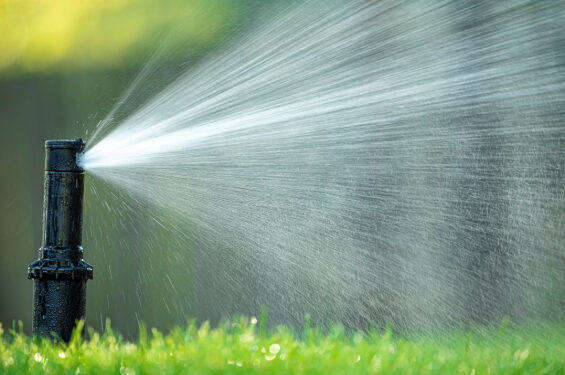
The best time to winterize is before cold weather sinks in, and this holds true for sprinkler systems, especially if you live in an area where temperatures drop below freezing for any length of time. Draining all the water from your sprinkler system is a must. Otherwise, the water that’s left in system’s pipes may freeze and expand, causing the pipes and fixtures to crack or burst. At best, you’ll have a costly repair bill come spring. At worst, you’ll be dealing with an even more expensive emergency repair.
There are three ways to drain water from your sprinkler system. You can use these basic guidelines—but when in doubt, call a professional. The company that installed the system can drain it for you, and usually for a reasonable price.
Drain it manually
Before you start, make sure to shut off your system’s water supply from the source. Most often, this will mean shutting off your entire water supply from your main water valve in your basement. Then, follow these five steps to complete the winterization process.
- Turn off the water supply by closing the sprinkler system’s main valve. The valve you’re looking for is on a separate branch of the system, closest to the water meter. It’s usually in your house, in a basement or crawlspace. If you find a “T” connection, you’re in the right place.
- Find the lowest points in the sprinkler system, where water collects when the system is off. You’ll want to locate the main drain valves in this section—they’re located downstream of each zone valve.
Tip: If you didn’t install your system and don’t know where the valves are, knowing where they’re usually located—near corners of houses and often downstream from the backflow preventer—can help. If you’re not confident you’ll find them, you can contact your city permit department as they should have a system blueprint on file. Or, you can use a tool called a solenoid activator (also known as a “chatter” locator because of the sound you hear when you find the valve). - Open all of the manual drain valves for each zone in your system. If you can, leave them open for several days so the water can completely drain from the pipes and sprinkler heads.
- Dump all the water that has collected in the main line by opening drain valves located upstream of each zone valve.
- You’re almost done. Before closing all the drain valves, lift each sprinkler head to drain out any residual water. Don’t forget to turn off your system’s automatic timer!
Manually draining a sprinkler system is cost effective and manageable for most homeowners, as long as the system is not too extensive. Once these steps are complete and the water to the house is back on, you’ll be set for winter.
Use an automatic drain feature
An automatically draining sprinkler system relies on dropping pressure to drain water. This works if your system has automatic drain valves at the end and low points of the system piping. These valves open automatically so water can drain from the system whenever the water pressure drops to below a certain psi, which happens when the sprinkler is off. To drain this type of system on demand, shut off the water-supply valve and turn the system control or timer to the “on” position. This will relieve the system pressure.
After the water has drained out of the system pipes, you’ll need to drain the valves, as trapped and frozen water can damage those as well. First, manually loosen the solenoids (these usually look like a PVC cap with wires coming out of it). Then, if your system has one, open the boiler drain valve (or stop and waste valve) at the main water supply and let any remaining water drain from between the irrigation and backflow preventing device.
Hire a pro to use the blowout method
This method involves flushing the sprinkler system with compressed air. It’s the most effective method, leaving the system almost completely dry and removing almost all water from pipes and sprinkler heads. However, if the pressure of the air being used to blow water out of the system rises above 40psi, extensive damage to the sprinkler system is possible. Using compressed air without professional knowledge can also put you at risk for serious injury. For this reason, the blowout method is best left to the professionals.
Don’t let water damage your sprinkler system or your home
Protecting your sprinklers is just one part of a thorough home winterization process, but it’s an important one. Taking these steps can help prevent water from ruining your sprinkler system, and it can protect your home. This is especially true of caring for the backflow device, which prevents water from reentering your house through the sprinkler system, keeping moisture out of your house and yard contaminants out of your drinking water. Learn more about how to prevent water damage, and whether or not you’re covered.



